Berlin. The Capital city of Germany. What a weird, quirky, classy, oddball, and altogether extraordinary place. We spend Friday-Wednesday here (a week ago, actually), and we certainly had a blast.
Before I go on about Berlin, I have some corrections to make to my last entry. I mentioned last time that my parents would represent a majority of the people reading this. As it turns out, I apparently have far more parents than I had previously assumed. Thank you to all for taking the time to read my musings. And thanks to Rachel and my family for continuing to be my biggest fans.
The first night gave us a chance for some culinary confusion. Hofbraühaus (“HOFF-broy-house”) is a Munich standard, so we let at the opportunity to eat there, despite being nearly 600 km away from Munich. With it a mere block away from our hostel, how could we say no to an early start to Oktoberfest? (Spoiler alert: we couldn’t.)
Walking westward as the sun was setting, we had fun with some photography in the Lustgarten on Museuminsel (Museum Island), between Berliner Dom (cathedral) and Altes Museum (Old Museum – a very creative name). Rick Steves says that the Berliner Dom “is a protestant assertion of strength,” adding that it “seems to proclaim ‘a mighty fortress is our God…and he speaks German!'” Nineteen of the seven of us had a splendid time.
We finished our excursion walking through the Brandenburger Tor, marveling that this was not something our parents could have done when they visited Germany 30 years ago. The gigantic gate was near the Berliner Mauer (Berlin Wall). Older readers may recall President Reagan challenging Gorbachev to “tear down this wall,” or perhaps remember news clips of people celebrating as the wall fell two years later. Younger readers and tech-savvy people can relive these moments on YouTube.
Contrasts began early on Saturday morning. Several more trains than we had initially expected were needed to get to Sachsenhausen Concentration Camp, where 50000 people were murdered during the Holocaust.
I tried to imagine whether or not 50000 people would fit inside an area equal to that of the camp. This doesn’t reflect any piece of reality – I was simply trying to imagine the size of a 50000-person crowd. 50000 is one of those numbers that’s just big enough that it’s magnitude is difficult to understand. I’m not sure many people have interacted with 50000 of anything in any kind of tangible way.
As though to remind us that our laughter and joy from the previous day would not be appropriate in this sacred, broken place, it was windy and rainy. The sun kept to itself for most of the day, only revealing itself a few times in the afternoon. Yet in the midst of the clouds and dark memories, there was still hope. No matter how hard the wind blew, it could never erase the memories. The trees would sooner topple and the buildings would sooner be reduced to dust than the Holocaust be forgotten. Perhaps this is an ill-informed view of how civilizations rise and fall, but it certainly felt this way to me.
We need monuments like Sachsenhausen to help us remember the horrible things that people did (and can do) to people. None of us perpetrated the Holocaust. Very few people know anybody whom it directly affected. Nobody really owes anybody else an apology for the past, nor do we need to assign blame to anybody alive today. But we do need to remember that these things happened so that we can do everything to keep them from happening again.
After Sachsenhausen, we had quite possibly the least concentration camp-ish meal possible. It was several huge plates of all kinds of meats, each with enough food to comfortably split it between four people. It was fantastically filling, far beyond what any Sachsenhausen meal could have been for the people detained there.
Following the meal, we went to Kaufhaus des Westens – KaDeWe, the largest department store in Europe. There were somewhere on the order of six stories of everything from jewelry and perfumes to clothing to toys to food and much more. Everything there seemed to have a markup. Even Lego kits seemed to cost more than they should in a typical store. This is a rather gutsy move for the store, particularly given the easily-referenced and well-defined prices of Lego kits. We looked for Ritter Sport chocolate bars to use as a standard price reference point, but couldn’t find any. Neither Nick nor I could tell if this was because the place was simply too large (which it was), or if it was because Ritter Sport is not classy enough chocolate for the normal clientele of KaDeWe (it very well might not be).
We didn’t stay very long at KaDeWe. There was simply too much to take in, and we had had a long day. The excess and materialism was simply too much for either of us, so we went home for some much needed rest. In an interesting symmetry to our morning and afternoon at Sachsenhausen, about 40 to 50 thousand people visit KaDeWe daily (per Wikipedia).
Sunday gave us a walking tour of the city. We covered some of the same route we had taken on Friday, but the added historical context was much appreciated. Berlin has had the interesting misfortune of being almost – but not quite – totally destroyed. There’s a mix of old buildings and new. The old ones embrace the grandeur of the emperors and kings of the past, the new ones celebrate rebirth and modernity, and everything in between serves as a reminder of the tumult of the 20th century. The juxtaposition of old and new, of destroyed sites and recent modern development, and even of former East and West – these are all things of which Berlin is very proud. Berlin is such a bizarre place because of all of these contrasts that define it, but these are the same contrasts that also make it the uniquely wonderful place that it is.
Almost as though an echo of Berlin, our group also let some of its contrasts show over the last few days – particularly with regards to travel style and planning. A great many of us are seasoned adventurers. We know how to deliberately get lost for the sake of new experiences, but we don’t stay lost for very long – there’s always a plan in place. Sure, we can recognize the fluidity of our short-term plans, but this doesn’t prevent us from living in the moment.
Other members of the group, well, don’t seem to be that great at traveling. The planning is there, but a combination of poor luck and incomplete follow-through has created some setbacks for them. Fornutely for them (and for the rest of us who live and work with them), it seems difficult to really upset their equilibria. If there is an edge over which they might be pushed, they sure seem to be far away from it.
We had the opportunity to do and see some more “touristy things,” or perhaps watch other tourists do touristy things. I try not to be an excessive travel hipster (just a little bit), but it can be fun and informative to watch tourists at popular sites. The crowds can sometimes be just as impressive as the thing at which they’re looking.
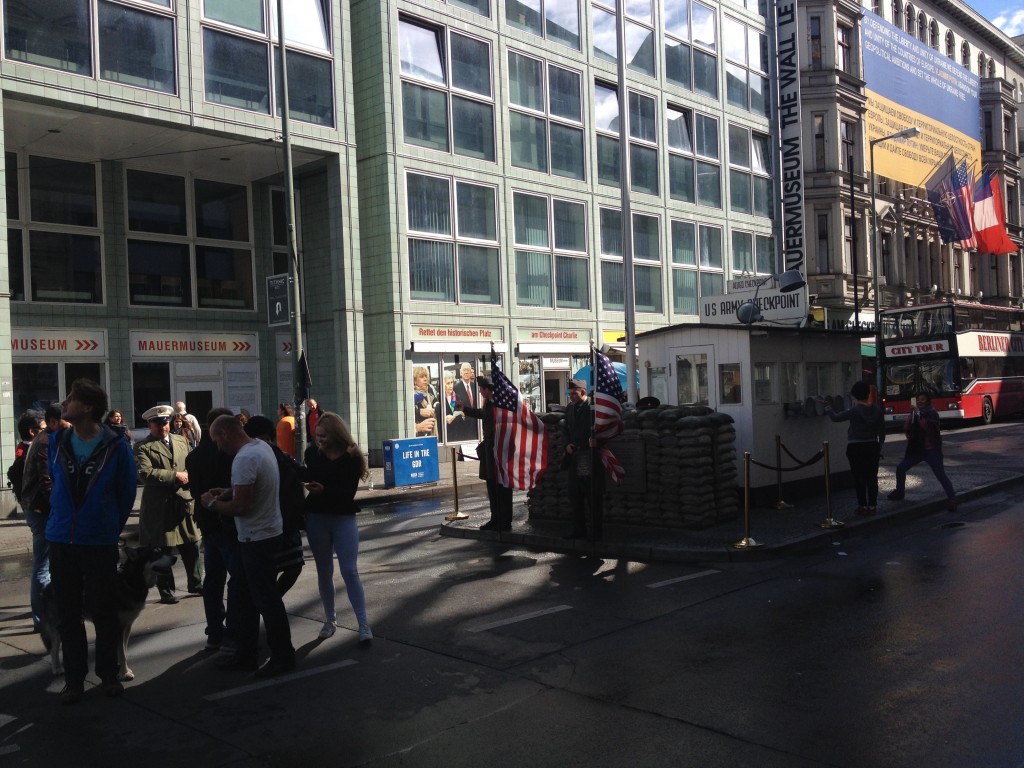
The “American Soldiers” at Checkpoint Charlie are neither Americans nor soldiers, and they barely speak English. A tour guide informed us that these men work as strippers after they’re done being soldiers. I did not investigate the veracity of this claim. I also do not know whether their alleged evening performance involves the removal of their fake uniforms. Hopefully not.
Nick and I had good fun exploring the history of engineering at the Deutsches Technikmuseum Berlin. This wasn’t any specific exhibit – we just went around looking at planes, trains, and boats, all while considering the engineering that went into making them go (or the failures that made them stop going). We’re told that this museum also has cars, but we didn’t get a chance to check those out. Siemens was scattered everywhere in this museum. Having completed an internship at a Siemens plant in Cincinnati last summer, I had to get some pictures of Siemens artifacts that we came across.

Werner von Siemens bust at Deutsches Technikmuseum Berlin. This guy adorned my ID badge this past summer.
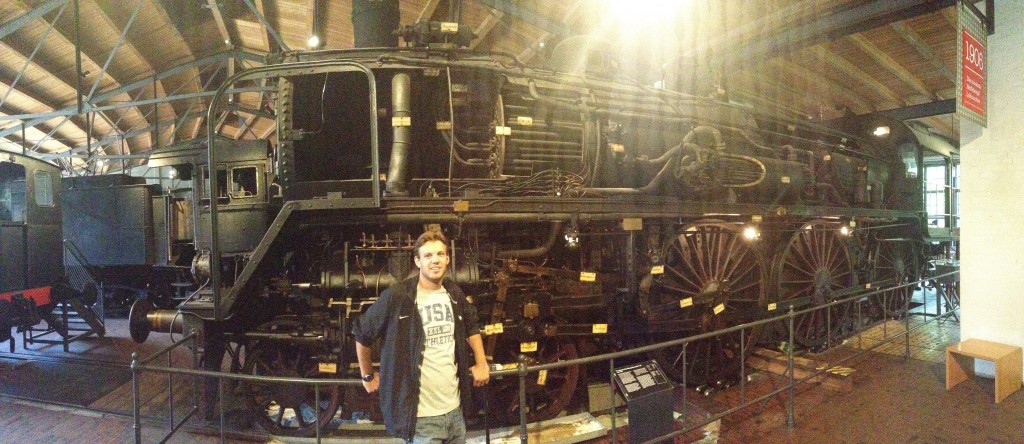
Nick stands in front of a steam locomotive at the Deutsches Technikmuseum Berlin. Steam engines are basically giant heat transfer demonstrations, which appeals to us engineers.
The below video is an example of something neither of my parents would have been able to do when they studied in Germany 30 years ago. Doing this gave me chills, which doesn’t happen particularly often.


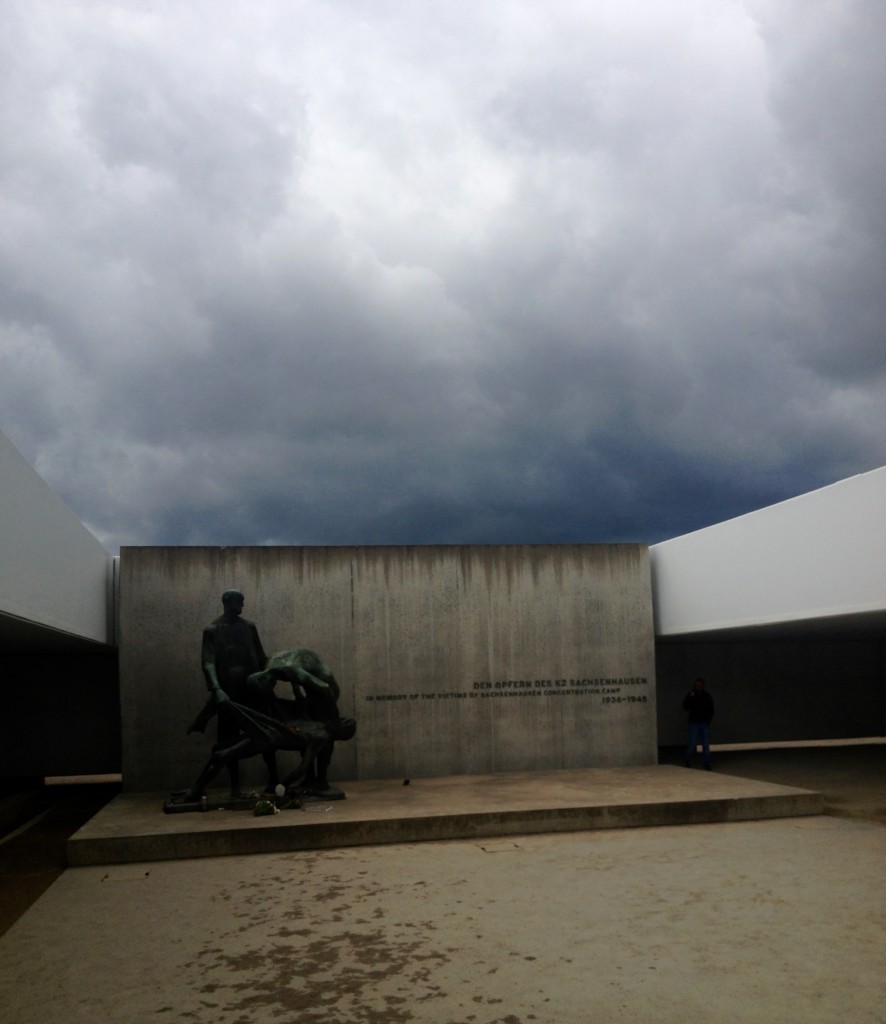
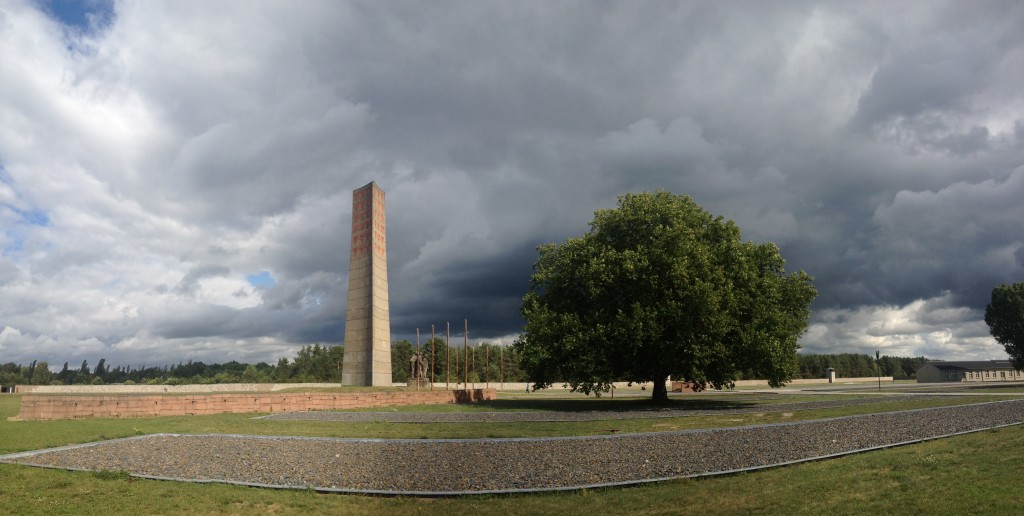

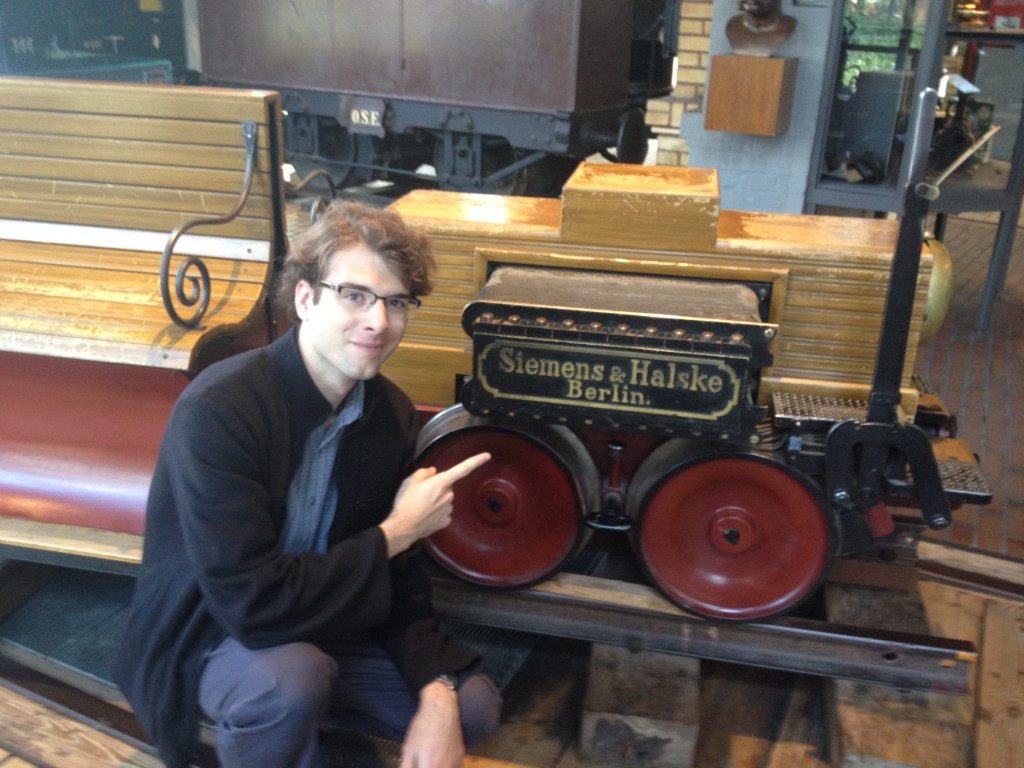
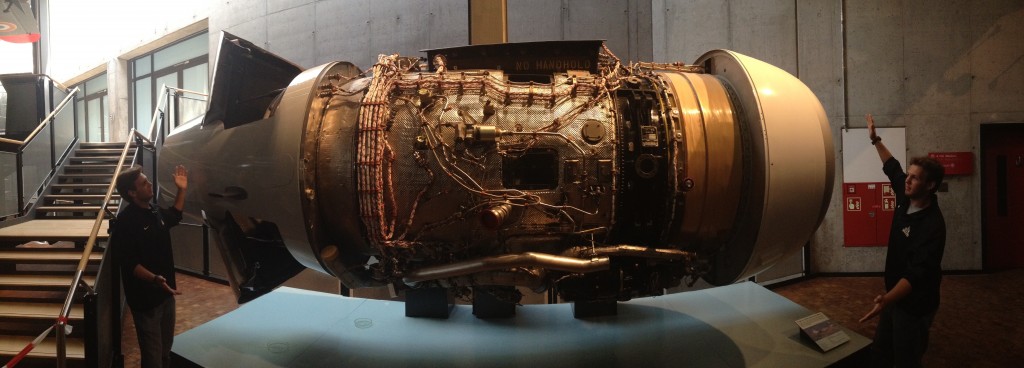


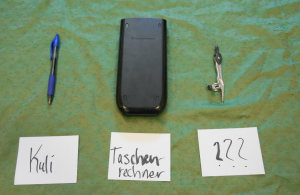 anslate the jargon as well as the industry themselves.
anslate the jargon as well as the industry themselves.